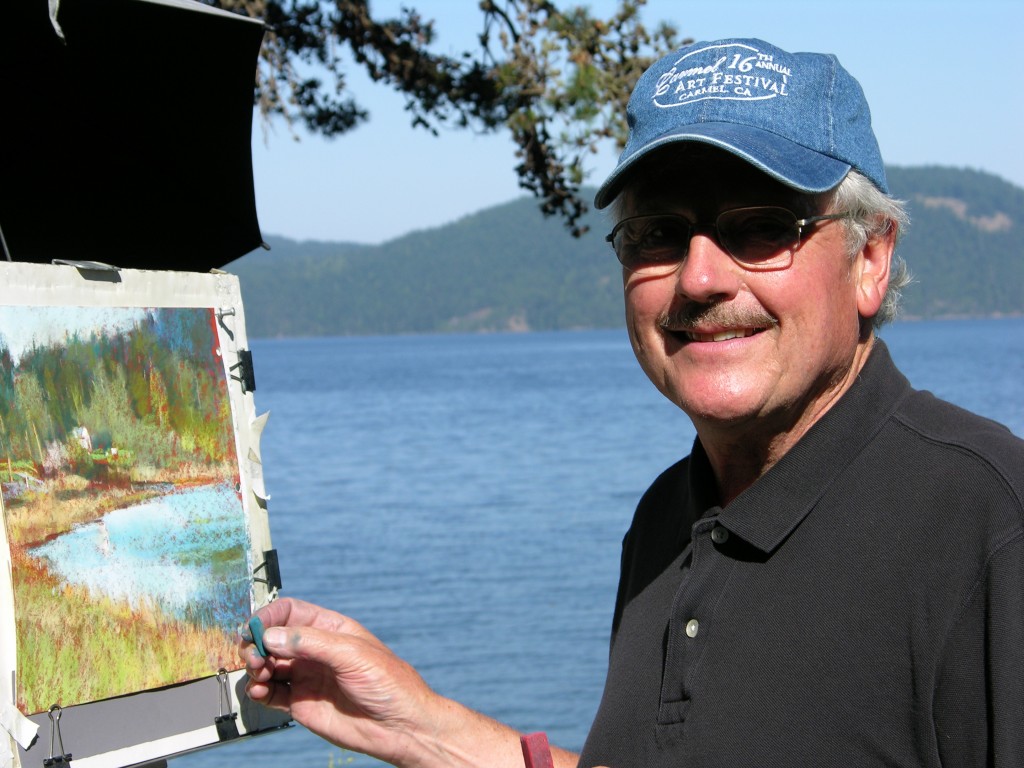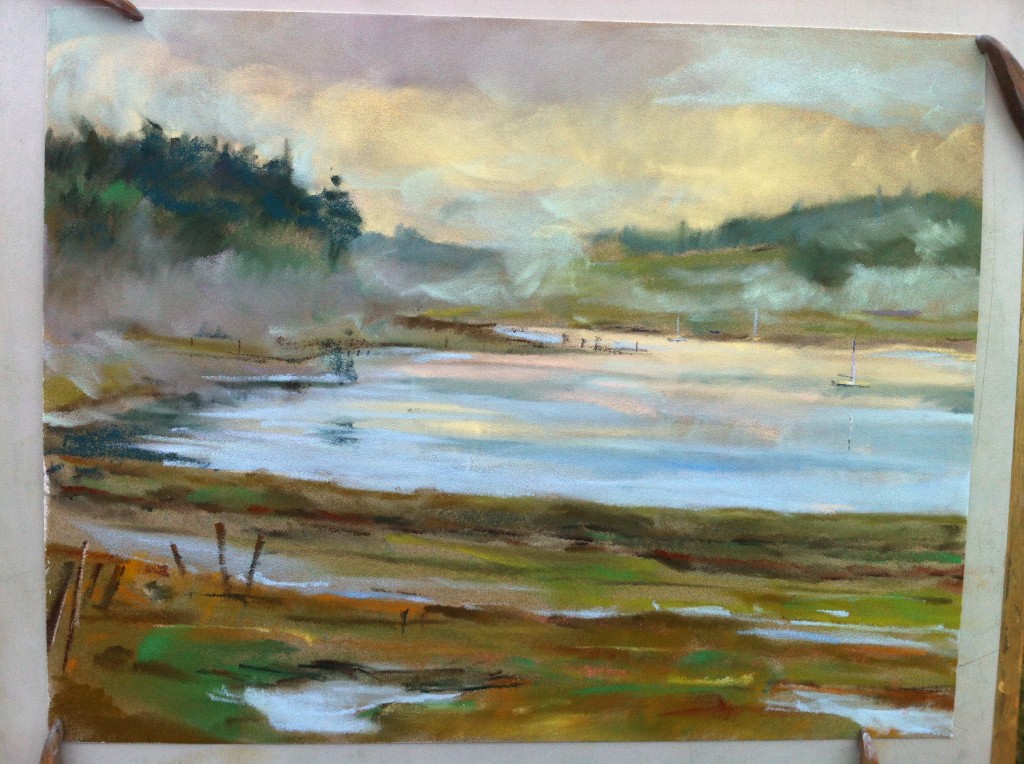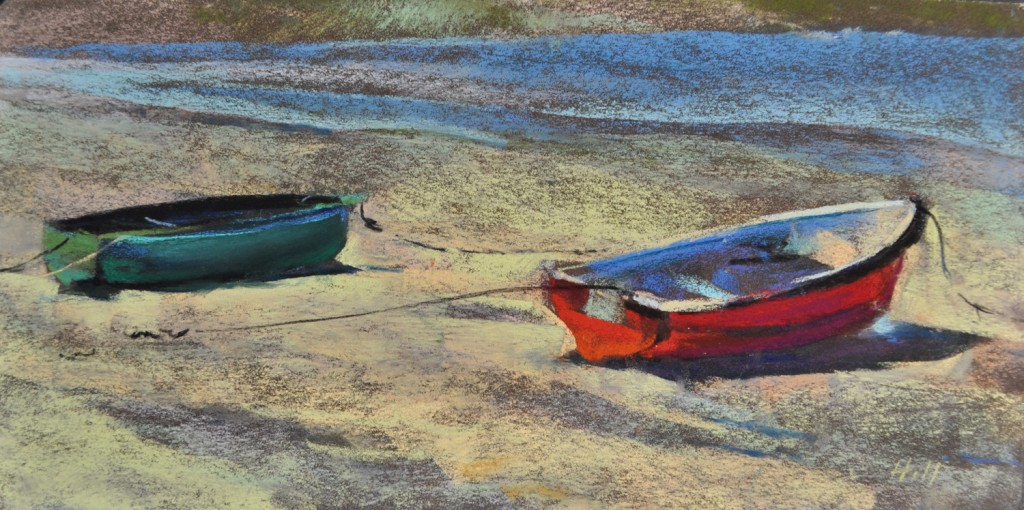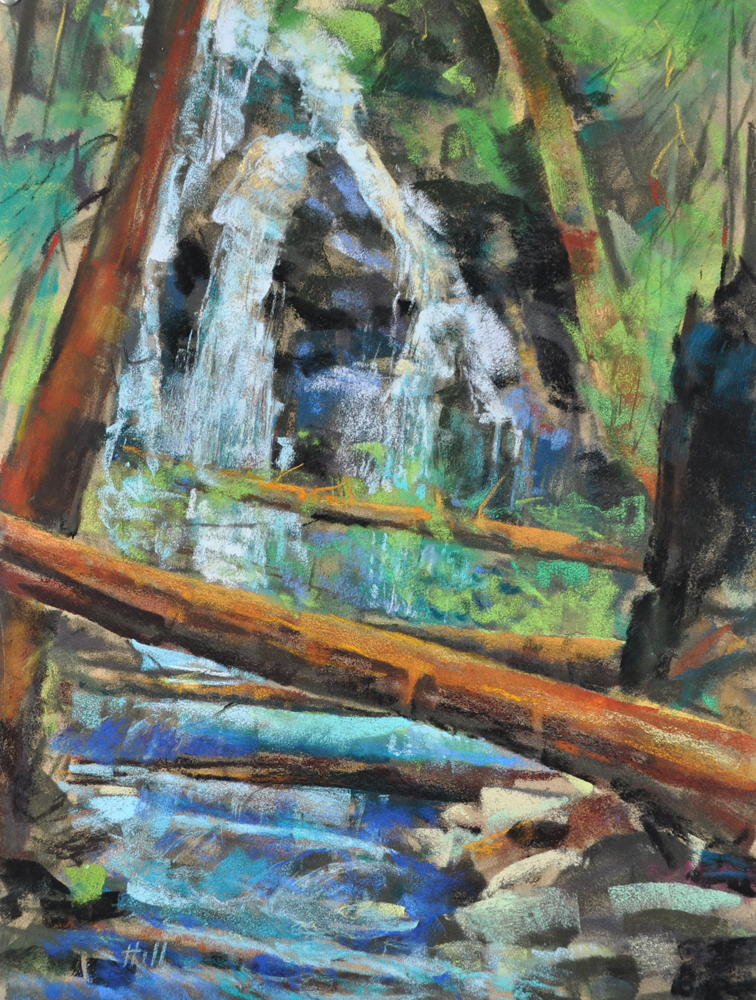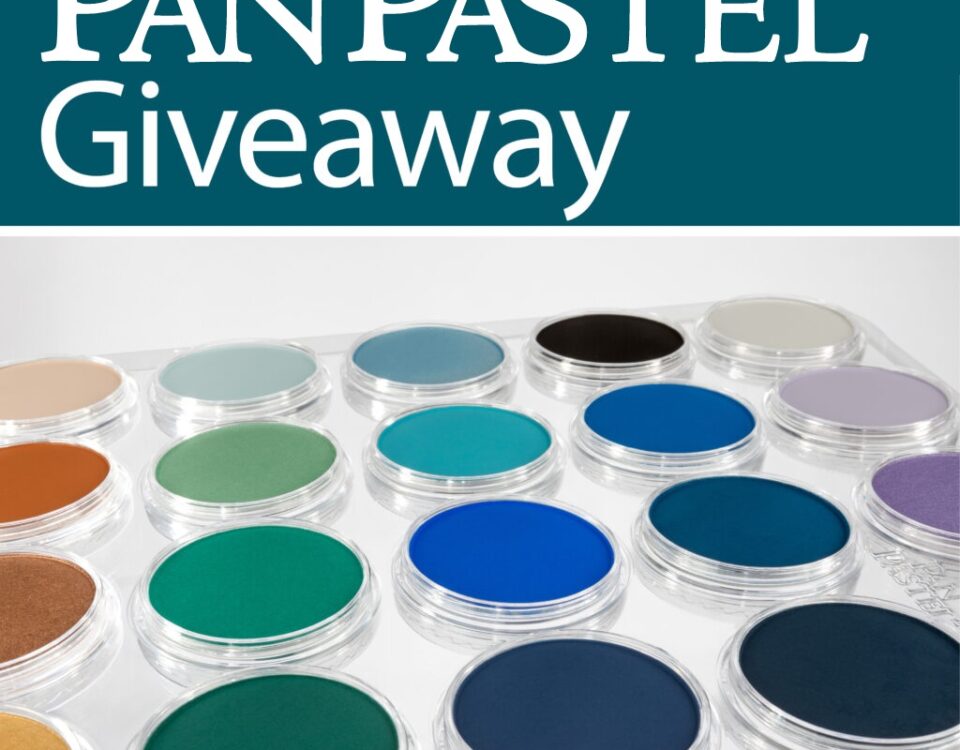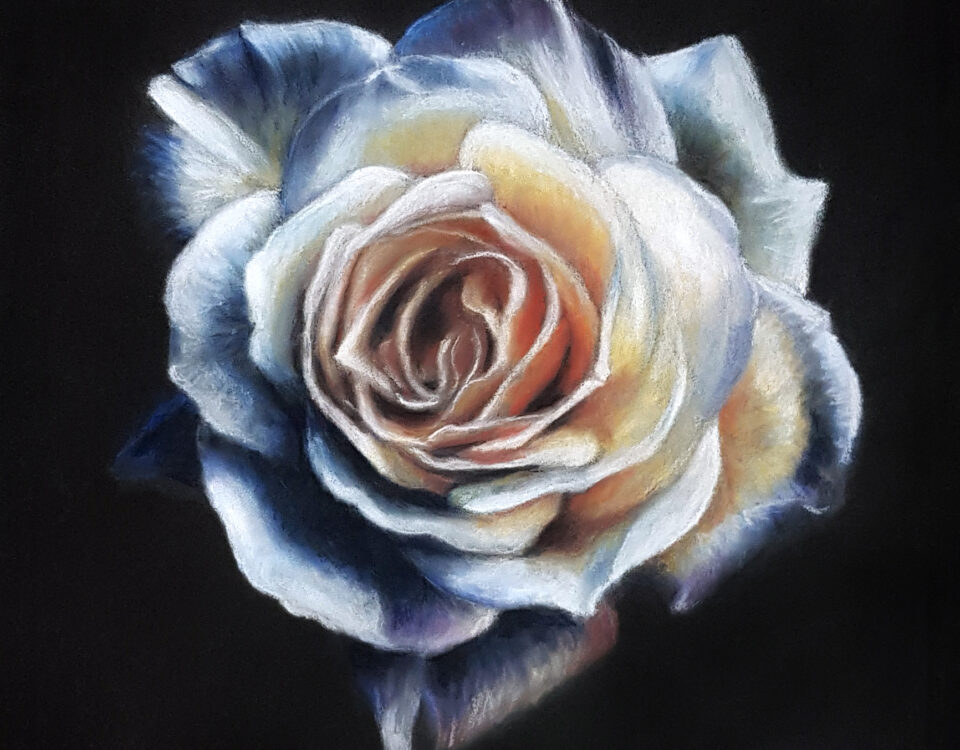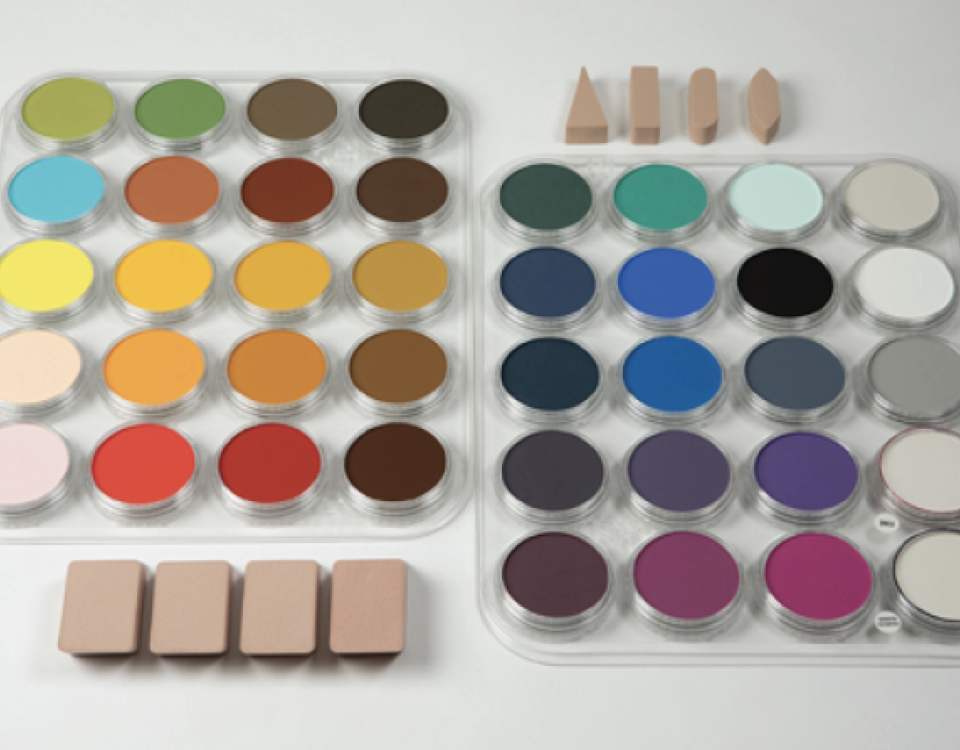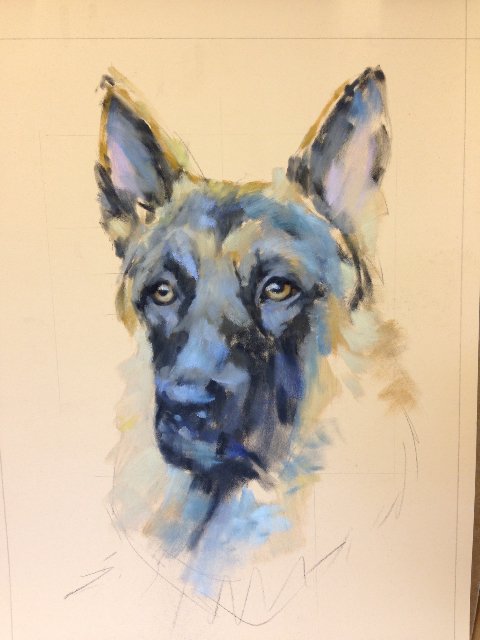


STEP-BY-STEP: German Shepherd
September 4, 2013


STEP-BY-STEP: Still Life – Peter Bjorn Nielsen
October 24, 2013This month’s interview is with Steven Hill. Steven is an award winning painter based in the North West US (Lopez Island, WA). He teaches nationally and internationally, including on a regular basis at Dakota Art Center. Steven incorporates PanPastel colors with pastel sticks in many of his paintings, including his plein air work, so we were delighted when he accepted our invitation to take part in an interview.
Note: all paintings shown below were painted with PanPastel & pastel sticks on Sennelier La Carte except “Bridge at Enniscorthy, Ireland” which is on Colourfix paper
Describe your artwork
Most of my artwork is done on-site, en plein air, working in pastels.
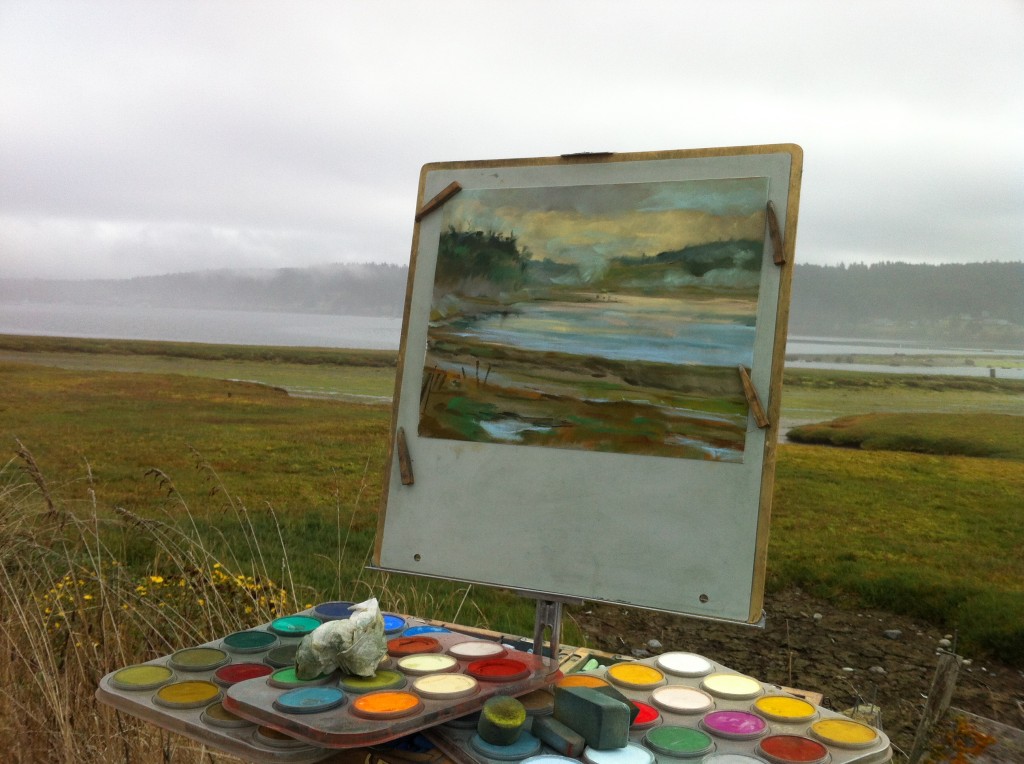

Plein Air Painting – Fisherman Bay Spit
My creative process involves a host of elements that range from site selection (it has to be somewhere I really want to set-up and do some serious work), evaluating visual elements in relationship to light, color, form and color temperature and making little studies in my sketchbook before I ever begin to paint. It’s rare to just walk-up to something, whip out the easel and just start painting – but it does happen!
I really like to ask myself why I want to paint any subject, figure out a course of action based on some really important objectives, like how I feel about it, what’s going to happen over the course of the next 2-3 hours that I can do to make a statement, and how involved will my sensory perceptions be throughout the process of painting. If I can’t get excited at the outset, there’s really nothing further to say, so I am very selective about all the why’s, how’s and when’s before I ever touch the surface. Life’s too short to dance with an ugly partner and for me painting is much the same.
How do you incorporate PanPastel into your work?
I use PanPastel as large “wash-like” strokes in almost all of my under painting and even employ them at the end of a piece, to soften or blend. I cut my teeth using watercolors and really like how I can mix PanPastel colors right on the palette and use many, many layers of subtle colorations to achieve a translucency that is very similar to water color.
“The Tombolo on Fisherman Bay” Steven Hill
Since I build multiple color layers to achieve a sense of depth, temperature and luminosity, I love how these respond very quickly, sometimes with a scrubbing motion, to fulfill my immediate needs, especially when working en plein air.
In the studio, I use them to just loosely apply “washes” when I’m beginning larger pieces, because they are so forgiving and easily changed – plus they help keep things soft, loose and brush-like when I apply different pressures on the strokes. The sponges act very much like a brush, but without the encumbrance of a “handle” so it really gives me lots of control at my fingertips. Conversely, a pastel stick has a tendency to create harder edges, even when you try to blend them out and loads the paper with too much pigment, sometimes, for layering a lot of color within a given area.
“Edison Slough in Winter” (12×16″) Steven Hill
I painted two completely different subjects recently on Orcas Island; The view from Mt. Constitution and Cascade Water Falls, both in Moran State Park, for a plein air painting event with (PAWA) “Plein Air Painters of Washington” and actually learned some new techniques, using my pans. The distant foggy atmosphere among the islands was a complete “no-brainer” with the pans, but layering very soft, subtle oranges and yellows back into the mix created a whole other “light effect” that had pleasing results. In the waterfall piece, blocking-in rocks behind and between falling water, is quite another thing, but the pans make that easier by providing interesting colorations within the very dark value ranges, that were easily saved for the “stick work” that came later. I actually “whapped” the sponge a few times to create an illusion of rhythm in falling water, using nothing more than a series of very rapid strokes (whaps) to make a nice balance between water and rock. I kept thinking about “positive and negative” special relationships instead of a hard focus on the actual moving subject in front of me. Sometimes, I just close my eyes and lay a little pigment on to see where it might lead and more often, than not, come-up with some wonderful results.
In both paintings, I learned some completely new methods of application and that was just today – these seem to be endless and limited only by my imagination!
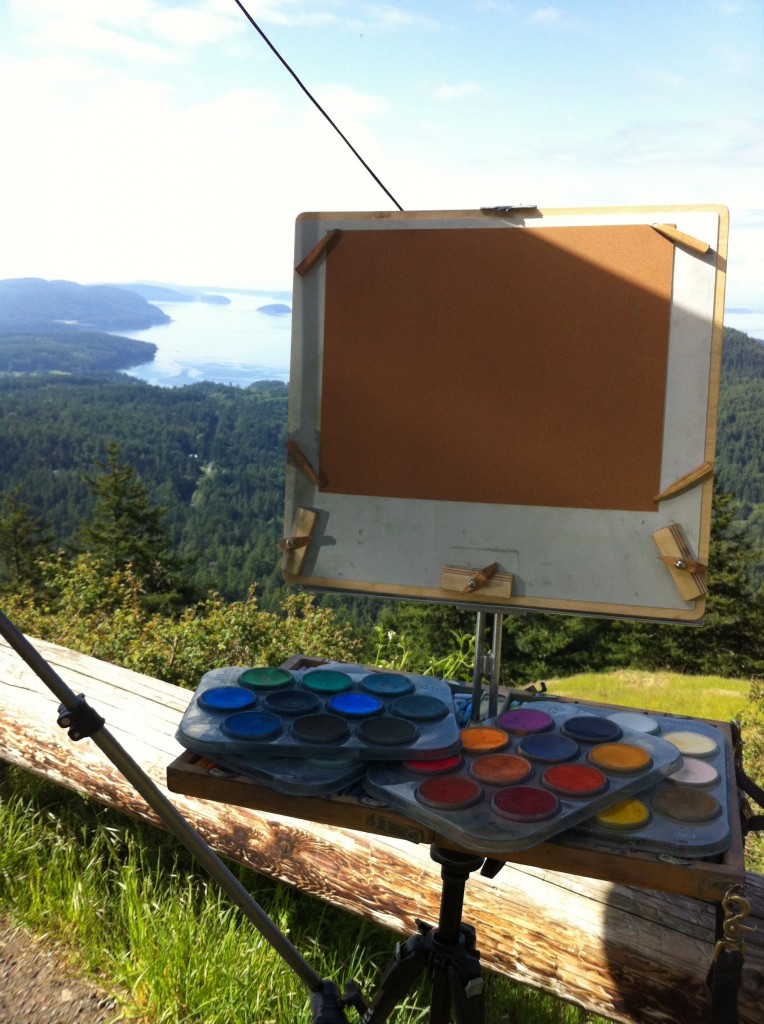

Painting on Orcas Island
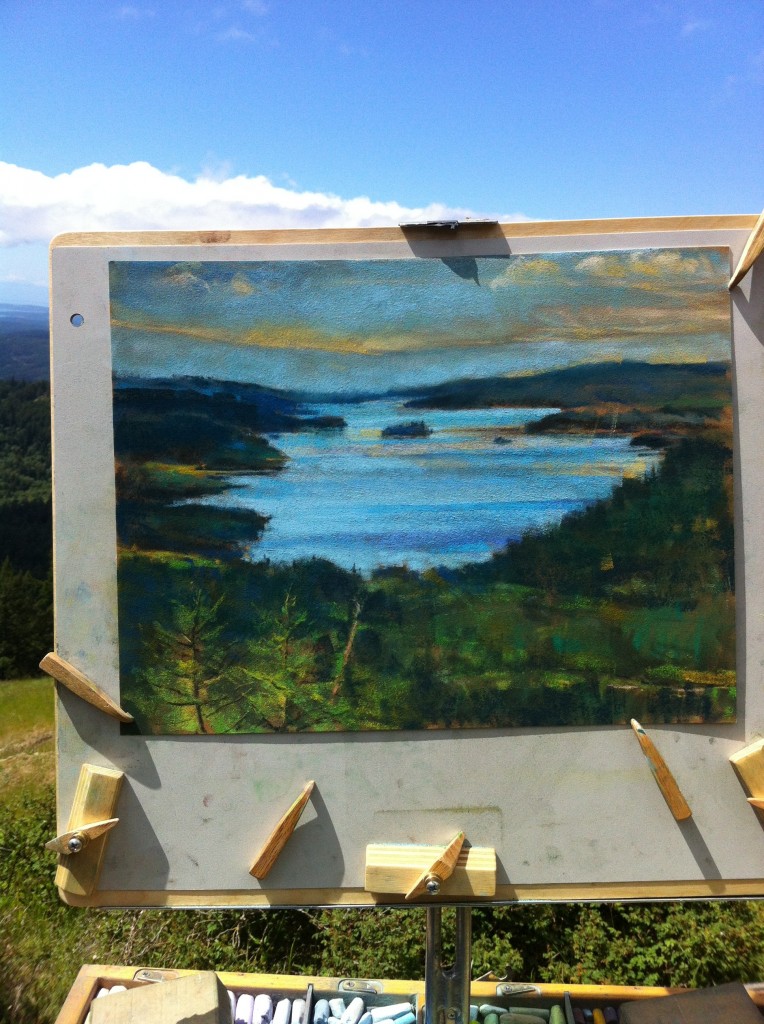

When did you first start using PanPastel?
I was standing at the edge of the Pacific Ocean at Point Lobos as a participant in the 16th Annual Carmel Art Festival, staring at rolling surf, creating many layers of light, as the waves came into the cove and around the distant rocks. I had a set of PanPastel I had purchased from Dakota a year earlier, but had never used them. I kept thinking “I need a watercolor wash here, not a hard or soft stick of pastel” so opened my set to see what might happen with these strange sponges and little plastic jars of pigment. I instantly mixed about 3 of the colors together by dabbing lightly into one, a little heavier into another and then hit the edge of the sponge with yet a 3rd color to get what looked like the right mix to apply.
I was absolutely stunned by the result and did nearly the whole painting with the Pans . . . and in about 20 minutes. I only needed to define a few harder edges and more dominant textures with my sticks, after that, and found that the under painting I had just created was so critical to achieve the effect of the overall soft, rolling, watery surf that hardly anything else was needed!
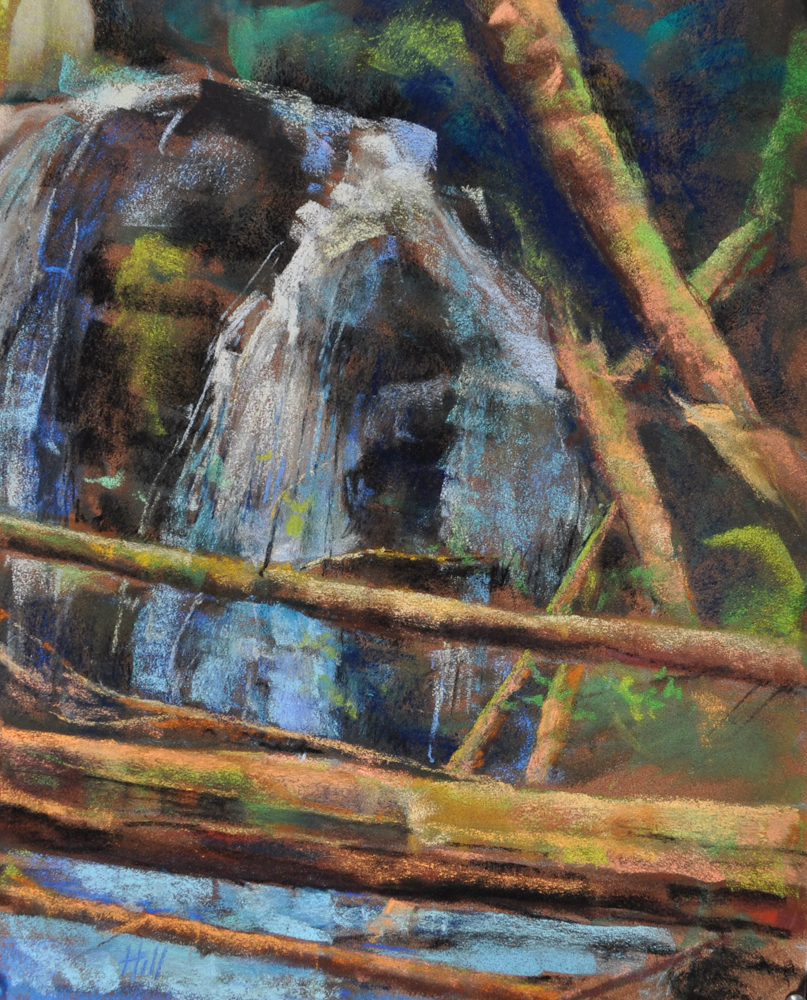

“Cascade Falls in Late Afternoon” (14×11″) Steven Hill
Anything else you’d like to share about PanPastel?
Discovering this new medium (PanPastel) has been a God send. I think we all get stuck in little ruts, as we paint, but using the pans has definitely forced me to respond to the media in new ways and try new things. I like to use every trick in the book when I’m painting, and get bored quickly if it all starts to look and feel the same. The pans opened lots of new doors when I most needed that to happen and they are now included as a core element in my arsenal of pastel supplies.
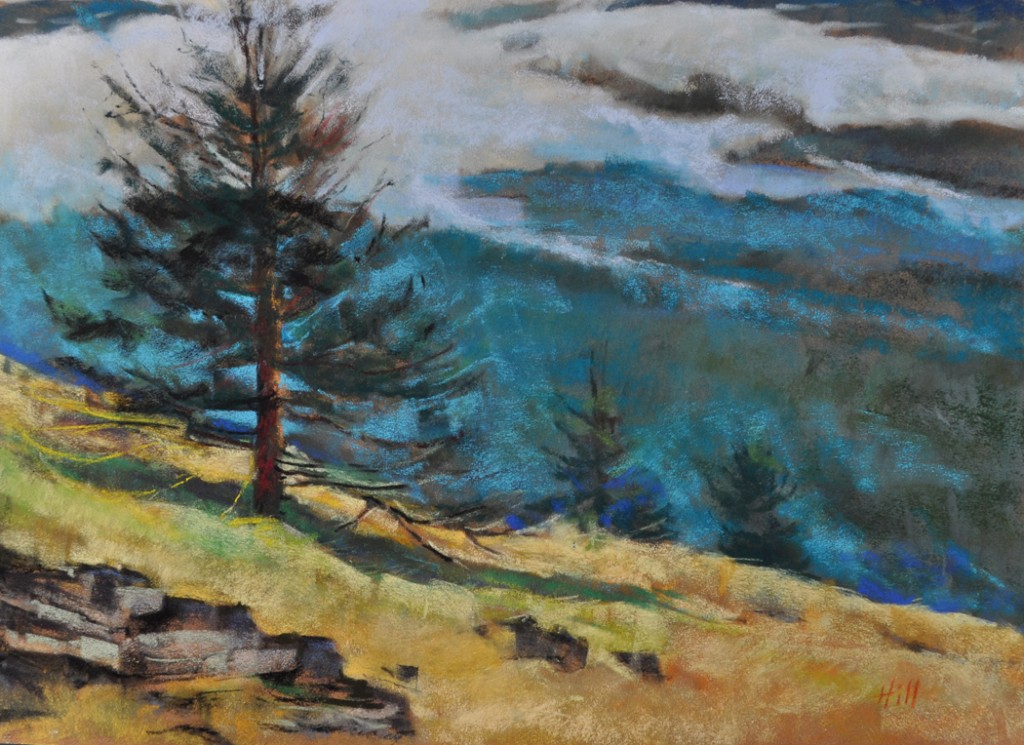

“Beyond the Edge on Mt. Constitution” (12×16″) Steven Hill
Describe the space/studio where you normally create
My studio space is the third floor of our custom built (I built it) home facing east to Swift Bay and Thatcher Pass in Washington State’s San Juan Islands. It is 30’ x 12’ with a 6’ north facing skylight and windows fronting the east and west sides. It has a stunning view and I spend more of my studio time here in the winter, as I am usually outdoors painting during the other seasons.
Who/what are your creative inspirations?
I’d like to dazzle you with my list of names of very famous old school painters and certainly they are out there in large numbers – I mean who doesn’t love the works laid down by Sorolla, Sargeant, Wyeth or Homer. I’m probably influenced by too many painters over my career to single out all the heroes, but I will say that at present I am very enamored with work by contemporary painters and teachers like Richard Schmid, David Curtis, Desmond O’Hagan, Everett Raymond Kinstler and many others who are putting the paint on in a style that creates large pangs of envy. Oh-h- to paint like them! Actually, I try not to paint “like them” as much as keep my own work moving forward by observing how they make things happen on canvas and paper. Becoming pigeon-holed seems counter-productive and I really try to keep my head out of their working styles, except for inspiration and occasional technical reference.


“Autumn Refraction” (13.5×19.5″) Steven Hill
What excites you most about your life as an artist?
Being able to paint each and every day, with no other commitments beyond making travel reservations to some pretty exotic painting sites . . . and then staying within budget for those trips. My wife, Judy, is very supportive and also loves to travel. It makes for an excellent life as an artist, because everything we do rotates around making art and planning our trips. We have been to Europe for extended painting trips 7 times in the past 12 years – with most from 1-3 months long. We also travel all over the U.S. for juried competitions and save our monies just for travel times. Instead of a second home, fancy cars or some other unnecessary expense, we travel.
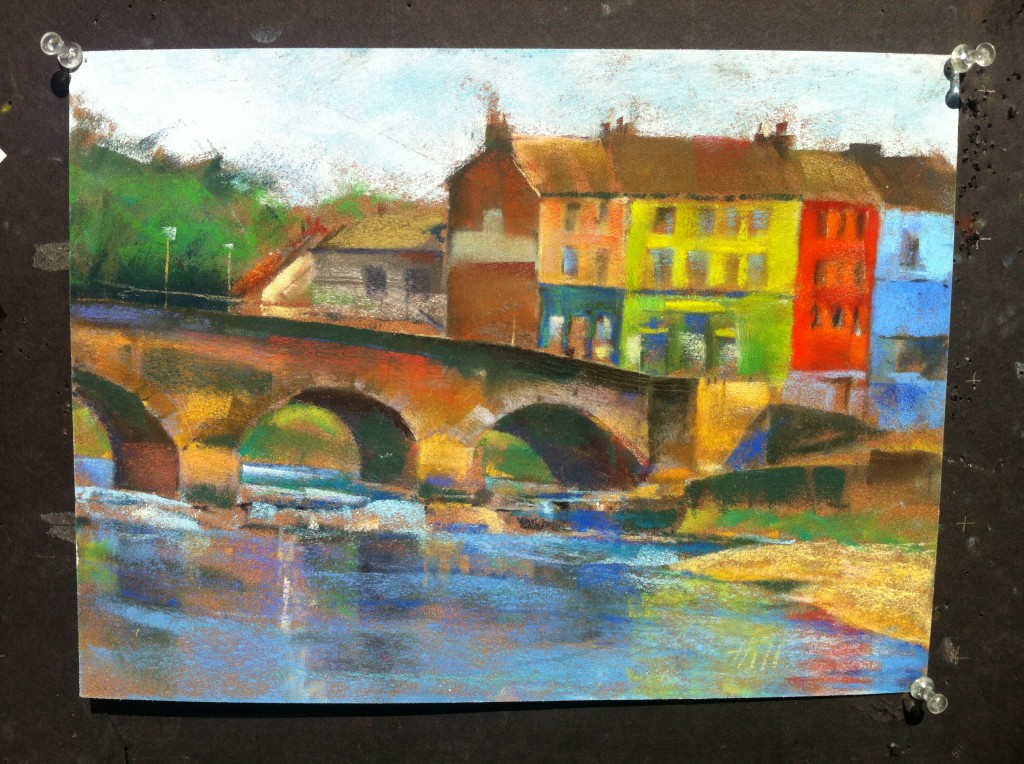

“Bridge at Enniscorthy, Ireland” (9×12″) Steven Hill
Also, meeting other really great artists on all these trips has been very satisfying and really helpful for my own growth as a painter. Corot stated “I hope with all my heart there is painting in heaven.” As I “mature” in my own style and technique, that passion only grows and I feel totally energized after a full day of painting. If I miss a few days here or there, I start to get pretty edgy, so it’s best for me to paint daily.
What’s the most valuable lesson you have learned on your journey as an artist?
Stay true to myself and learn to evaluate my own work, to trust that inner voice. If I’m working on something that I find worthy, exciting, and can’t wait to get back at it, then I probably don’t need a lot of distracting advice. I’ve had plenty of that over the years and have found that my work usually suffers when I’m not feeling 100% – it really does have to come from the heart.
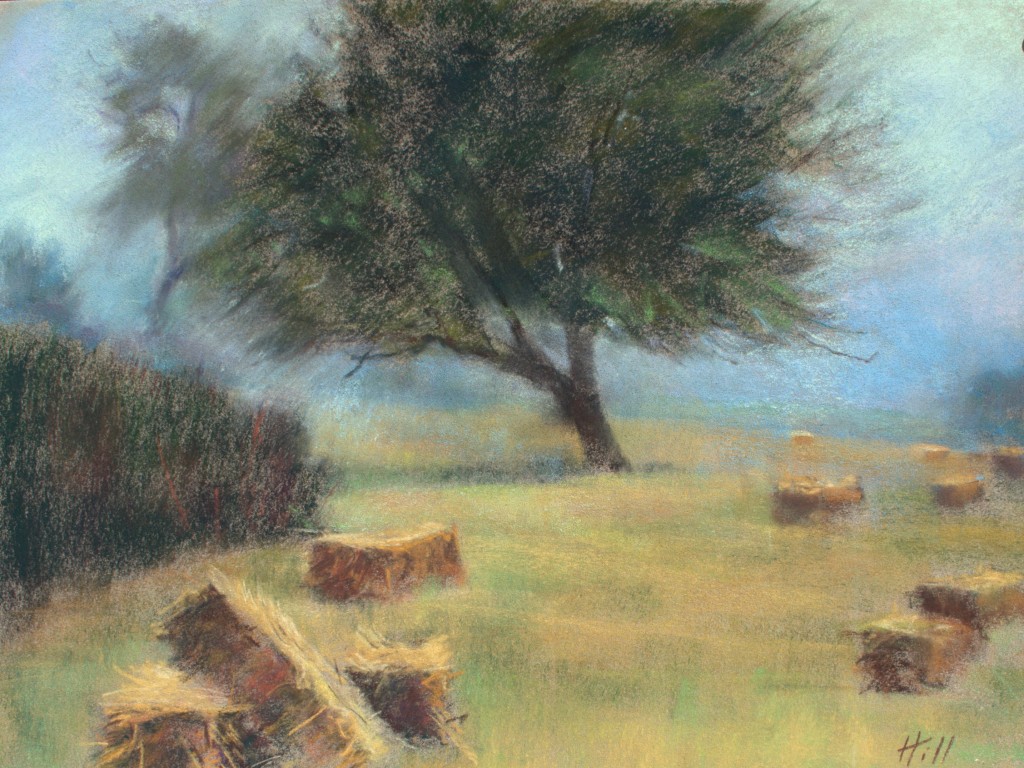

“At the Edge of Light and Mist Sun” (11.5×16″) Steven Hill
What are your artistic and other goals for the future?
To paint until I drop – and as an old friend once said “Steve, I hope you are doing an ‘upstroke’ when you check-out”.
I also like to share my work with others and enjoy teaching workshops as much as painting outdoors (usually goes hand-in-glove) as I get an unbridled opportunity to observe other artists in their most intimate moments at the easel. I learn so-o much through observing and teaching. It helps me continue to grow, as a painter and I enjoy passing the torch whenever and wherever I get a chance.
“Beached” Steven Hill
When you are not working on your artwork, what other interests do you have?
Gourmet cooking with very fresh garden veggies, especially using our own home canned tomatoes and homemade pesto (my wife grows championship level basil and other herbs) and we have the world’s freshest seafood from around the San Juan Islands, including freshly caught Dungeness Crab, which we do right in front of our home!
I love visits to and from our family and friends. We always celebrate those with wonderful home cooked foods. I bicycle many miles daily and work-out with core strength training to stay fit and love to take long hikes and walks around these fabulous islands where we live.
“Cascade Falls Grotto” (16×12″) Steven Hill
Any upcoming events, workshops, shows, book launches, and projects you’d like to tell us about?
I teach on-going workshops at Dakota Fine Art Center (formerly La Conner Art Workshops) www.dakotaartcenter.com for details and schedules. I also have a pastel workshop in May 2014, in Springfield, Missouri. www.visartalliance.com
I will be leading another big art trip to Croatia in September, 2014 on korcula Island, near Dubrovnik. This one is 11 days painting around beautiful ports and villages in the Adriatic Sea. www.slikamilina.ca for details.
I always enjoy entering juried art events and recently went to Ireland for “Art in the Open” in Wexford, then I went to England for a couple of weeks to visit our new in-laws, one of whom enjoys watercolor painting, so we enjoyed painting the villages and countryside around Leeds and Robin Hood’s Bay.
The big one this year, however, is the Plein Air event “In the Footsteps of Thomas Moran” at Zion National Park in early November. I’m very excited to be able to participate in that event and experience the canyon lands firsthand.
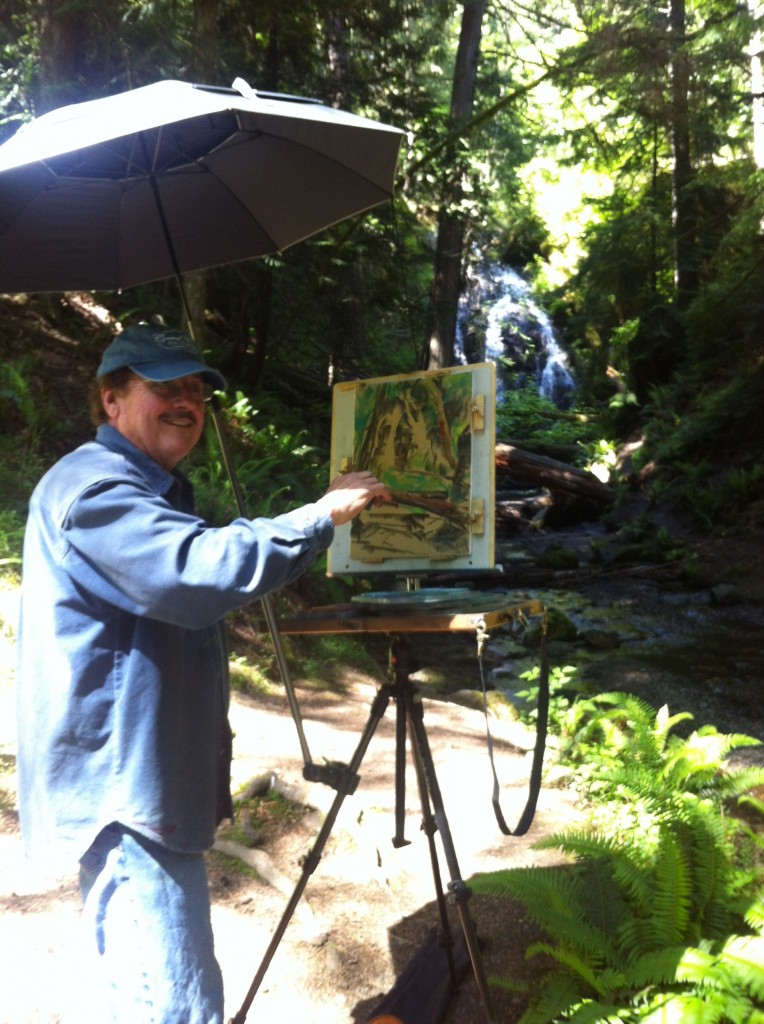

For more information & to see more of Steven’s work visit: www.windsweptstudios.com


